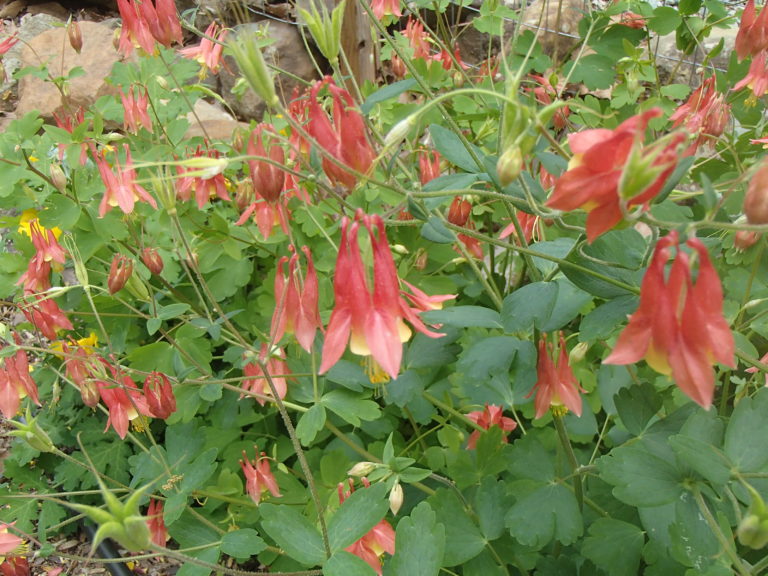Generous, easy to grow, cheerful and carefree, Wild Columbine is a favorite in perennial gardens from the simplest to the most sophisticated. Native to the entire eastern half of North America, it thrives in partial shade, but tolerates full sun (if not too hot or dry) as well as full shade. Wild Columbine adapts to various soils as long as they are well drained. It’s delicate foliage belies its tough nature, and the nodding red and cream flowers are plentiful and sweet. We have seen Wild Columbine used as a filler in shady gardens, providing a rich, whimsical tone all but effortlessly. Wild columbine is a great wildlife plant and draws butterflies, hummingbirds and bumblebees. Deadheading will prevent self-seeding.
NURSERY HOURS
Wednesday: 10-4 Thursday: 10-6 Friday-Saturday: 10-4 Sunday: 12-4
Aquilegia canadensis

Key Info
Scientific Name: Aquilegia canadensis L.
Common Names: Wild Columbine, Eastern Columbine, Wild Red Columbine
Family Names: Ranunculaceae (Buttercup Family)
Plant Type: Herbaceous perennial
Leaf Retention: Semi-evergreen
Flower Color: Red
Special Characteristics: Attracts bees Attracts butterflies, Attracts hummingbirds Shade tolerant, Reported to be deer resistant.
Additional Info
Habit: Upright, mound-forming perennial with a number of mostly unbranched shoots
Height: 1' to 2'
Spread: 1-1.5'
Soil Conditions: Avg-dry; pH mildly acidic to milkly alkaline; tolerates clay soils, esp if organic matter is added; should drain well; thrives on lean soils rather than richly amended garden soil.
Leaves: Attractive, semi-evergreen foliage composed of both basal leaves and more leaves on long petioles arranged alternately up the stem. Leaves are divided into three leaflets, and each of these is further divided into three rounded secondary lobes, all presented in a flat arrangement with a distinctly delicate appearance.
Flowers (or reproductive structures: 1-2-inch red and cream flowers consisting of 5 yellow/cream petals alternating with 5 reddish sepals. These are all downwardly oriented and surrounding the long, drooping stamens with their bright yellow anthers. The bases of the petals arch upward, forming distinctive reflexed spurs. These spurs contain nectar, which attracts long-tongued insects and hummingbirds.
Fruit: Bright black seeds in dehiscent pod-shaped structures. Flowers go to seed 2-3 weeks after blooming
Natural Distribution: Shaded woods, rocky slopes
USDA Hardiness Zone: 3 to 8
USDA Wetland Indicator Status in NC: FACU
Pollination: Various bees, butterflies, moths, hummingbirds
Wildlife Connections: The upwardly-oriented floral spurs contain nectar and attract long-tongued butterflies and the Columbine Duskywing. The seeds are popular with many birds.
Propagation: By seed.
